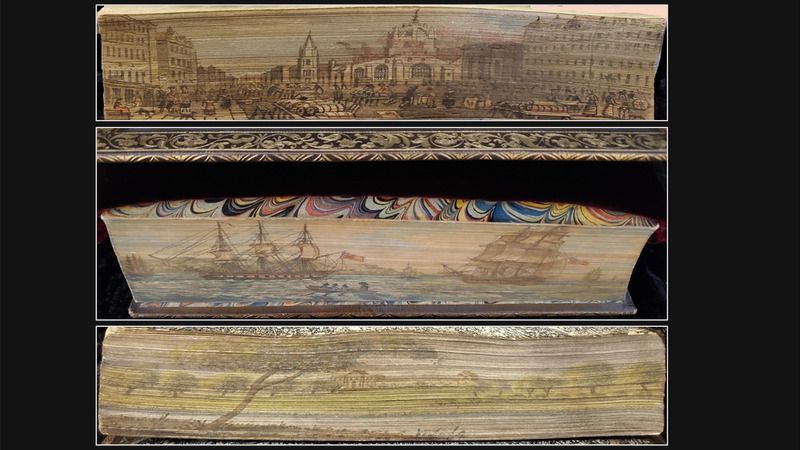Fore-edge paintings
Item
-
Title
-
Fore-edge paintings
-
Description
-
"Fore-edge painting is a technique of painting the edges of the leaves, or folios, of a book, employed in the European Middle Ages. From 1650 onward a number of London binders practiced a new decorative method of fore-edge painting: floral scrolls or scenes were painted upon the fanned-out fore-edge of the leaves and concealed by a normal gilt edge when the book was closed; they became visible only when it was opened. This decorative device was continued in the 18th century, but by the late 19th century fore-edge painting began to wane in popularity."
(https://www.britannica.com/art/fore-edge-painting)
*Top: painting of cityscape -
The Office and Work of the Holy Spirit (1842),
held in RBX {BT121 .B825x 1842a}
*Middle: painting of waterfront and two ships -
Life, Letters, and Journals of Lord Byron (1838),
held in the Lord Byron collection {PR4381.A3 M6 1838a}
*Bottom: painting of the countryside with pond and tree -
The Seasons (1811),
held in RBX {PR3732 .S41811b}

